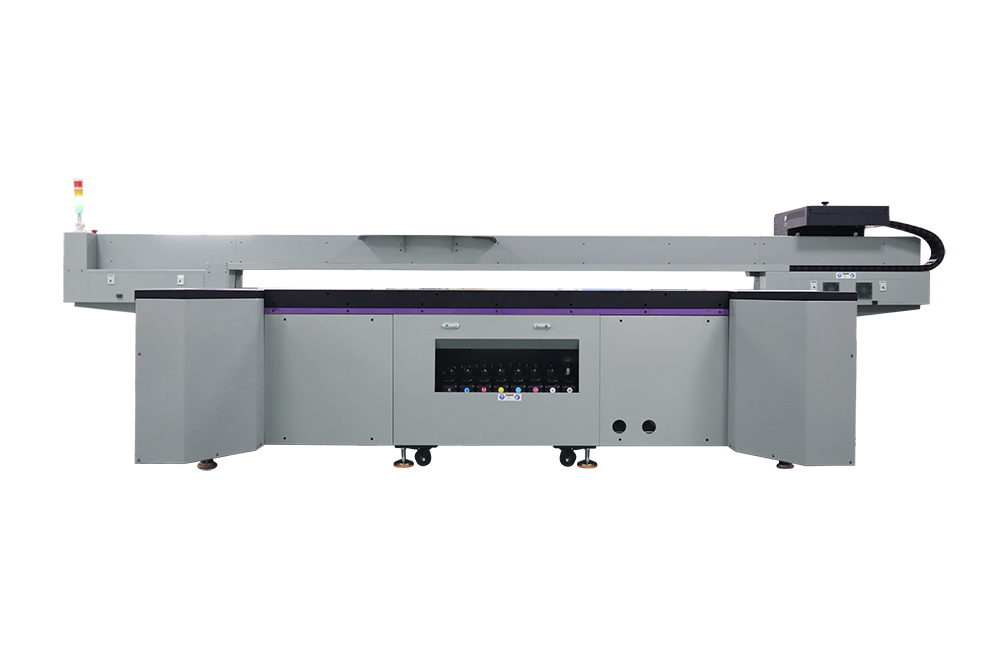What is the Role of a Vacuum Table in UV Flatbed Printing?
What is the Role of a Vacuum Table in UV Flatbed Printing?
UV flatbed printing has revolutionized the way we approach digital printing, offering unparalleled versatility and precision in reproducing images on a wide range of substrates. This technology has found applications in various industries, including advertising, signage, packaging, and even fine art reproduction. One of the key components that contribute to the efficiency and effectiveness of UV flatbed printers is the vacuum table. In this article, we will delve into the specifics of what a vacuum table is, how it works, and its crucial role in UV flatbed printing.

Understanding UV Flatbed Printing
UV flatbed printing is a digital printing process that utilizes ultraviolet (UV) light to cure or dry ink as it is applied to a substrate. This technology allows for instant drying, enabling the printer to produce high-quality prints quickly and efficiently. The flatbed design of these printers accommodates a wide variety of materials, including rigid substrates like glass, metal, plastic, wood, and even flexible materials with the use of additional fixtures.
The Composition of a Vacuum Table
A vacuum table is a fundamental component of a UV flatbed printer, designed to secure the substrate firmly in place during the printing process. It typically consists of a flat surface, often made of aluminum or another rigid material, with a series of small holes or channels beneath the surface. These holes connect to a vacuum pump, which, when activated, creates a negative pressure that sucks air through the holes, effectively adhering the substrate to the table surface.
How Does a Vacuum Table Work?
The vacuum table works by creating a seal between the substrate and the table surface. When the vacuum pump is engaged, air is sucked through the holes in the table, creating a vacuum effect that pulls the substrate downwards onto the table. This process eliminates any air pockets between the substrate and the table, ensuring a flat, even surface for printing. The result is a secure hold that prevents the substrate from shifting or moving during the printing process, which is essential for achieving high-quality prints.
The Role of a Vacuum Table in UV Flatbed Printing
Ensuring Print Quality
The primary role of a vacuum table in UV flatbed printing is to ensure the quality of the final print. By securely holding the substrate in place, the vacuum table prevents any movement or shifting that could lead to blurring, smudging, or other print defects. This stability is crucial for achieving sharp, vibrant prints with excellent detail and resolution.
Versatility in Substrate Handling
UV flatbed printers are known for their ability to print on a wide range of substrates. The vacuum table plays a significant role in this versatility by providing a universal platform that can accommodate various materials, including those with irregular shapes or textures. The customizable vacuum pressure allows for fine-tuning the hold on different substrates, ensuring optimal results regardless of the material being printed on.
Efficiency and Workflow
In a production environment, efficiency is key. The vacuum table contributes to a streamlined workflow by simplifying the process of loading and securing substrates. With the substrate firmly in place, operators can quickly move from one print job to the next, reducing downtime and increasing productivity.
Reducing Waste and Cost
Print waste can be a significant expense in any printing operation. The vacuum table helps minimize waste by ensuring that each print is executed perfectly, reducing the need for reprints due to errors caused by substrate movement. Additionally, the stable printing environment created by the vacuum table extends the life of the printer’s components, such as the printhead, by reducing the risk of damage from substrate movement.
Enabling Automation and Advanced Features
As UV flatbed printing technology continues to evolve, vacuum tables are becoming more integrated with advanced features and automation. For example, some printers use sensors in the vacuum table to detect the presence and position of the substrate, enabling automatic adjustments to the print job for optimal results. This integration further enhances the precision and efficiency of the printing process.
Maintenance and Considerations
While vacuum tables are designed for durability and reliability, proper maintenance is essential to ensure their continued effectiveness. Regular cleaning of the table surface and vacuum channels is necessary to prevent dust and debris from interfering with the vacuum’s ability to hold the substrate securely. Additionally, periodic inspections of the vacuum pump and associated components are crucial to identify and address any potential issues before they impact print quality or productivity.
Conclusion
In summary, the vacuum table plays a pivotal role in UV flatbed printing, contributing to print quality, versatility, efficiency, and cost-effectiveness. Its ability to securely hold a wide range of substrates in place during the printing process is essential for achieving high-quality prints and maintaining a streamlined workflow. As UV flatbed printing technology continues to advance, the vacuum table will remain a critical component, evolving to meet the demands of an ever-expanding range of applications and materials. Understanding the function and importance of the vacuum table is vital for anyone involved in UV flatbed printing, from operators to business owners, as it directly impacts the success and profitability of their printing operations.
